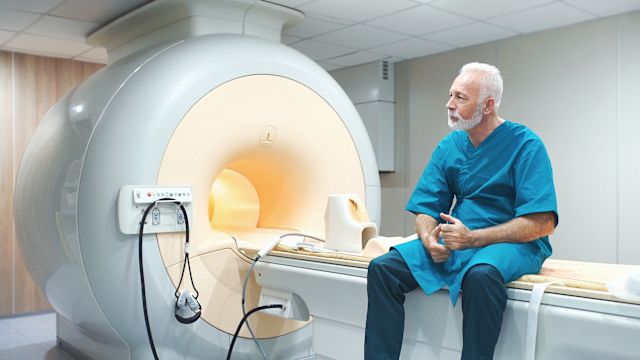Metastatic prostate cancer is cancer that begins in the cells of the prostate and then spreads to distant sites in the body. It is sometimes referred to as advanced prostate cancer or stage IV prostate cancer. While prostate cancer can spread to almost any tissue within the body, spread most often occurs in the lymph nodes, the bones, the lungs, and the liver. Less common sites for metastasis include the adrenal glands, pancreas, kidneys, breast tissue, and brain.
How prostate cancer spreads
Prostate cancer begins in the prostate, a gland that is part of the male reproductive system, located just below the bladder. Like all other parts of the body, the prostate gland is connected to the circulatory system and lymphatic system. When there is a tumor in the prostate gland, cancerous cells can break away from the tumor and travel through the blood vessels or lymphatic system and form tumors in other areas of the body.
Treatments for metastatic prostate cancer
When treating any type of cancer, one of the first things a person will need to discuss with their healthcare providers are the treatment goals. Metastatic prostate cancer cannot be cured, and the goal of treatment will be to control the cancer and to maintain the best quality of life while doing so. Your best source of information about how to approach these treatment goals will be your healthcare providers.
Because metastatic prostate cancer is spread throughout the body, treatment typically involves systemic therapies—treatments that work throughout the body. Androgen deprivation therapy (ADT), also known as hormone therapy is a common approach to treatment.
This approach involves using medications that shut down the body’s production of testosterone. Testosterone is the main male sex hormone (or androgen). Prostate cancer cells rely on this hormone to continue multiplying. Without testosterone, tumors will grow more slowly and decrease in size.
Examples of medications used in ADT include:
- GnRH agonists and GnRH antagonists. These are medications that shut down production of testosterone in the testicles (where the majority of testosterone is produced).
- Anti-androgens. These medications do not interfere with the production of testosterone, and instead block testosterone from reaching cancer cells. Anti-androgens are sometimes used in combination with other ADT medications.
- Other medications. The female sex hormone estrogen, steroid drugs, and other medications that block testosterone activity are also sometimes used.
Surgery to remove the testicles also qualifies as a form of ADT, as it will stop the production of testosterone. This approach is not commonly used.
In addition to ADT, a treatment plan may also include therapies that target specific tumors in other areas of the body. For example, prostate cancer that has spread to bones may be treated with radiation therapy or medications to treat bone pain and prevent fractures.
Treatment when prostate cancer progresses or recurs
Not all prostate cancers respond to ADT—and even those cancers that do respond to ADT eventually become resistant to it after some time. If this occurs, there are other treatment approaches that may be used.
- Adding or switching ADT medications. There are different types of drugs used in ADT that act on the body in different ways. Switching to a different type of drug or adding another type of drug may sometimes achieve a better response.
- Chemotherapy. Chemotherapy drugs contain powerful chemicals that are effective at killing cancer cells. These can be used on their own or in combination with ADT.
- Immunotherapy. Immunotherapy is a type of cancer treatment that helps the body’s immune system identify and destroy cancer cells.
- Targeted therapy. These are newer drugs for prostate cancer that are designed to specifically target cancer cells while causing less damage to healthy cells.
As with any cancer treatment, the decision of how to treat metastatic prostate cancer will be a decision a person will make with their healthcare provider, after considering the potential benefits of specific treatments as well as the risk of side effects.






